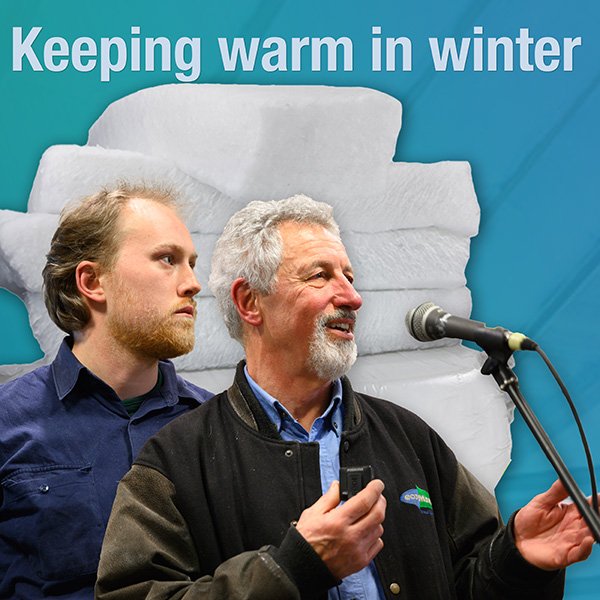Learn more about being cooler in summer and warmer in winter
Lighter Footprints members were delighted to welcome two experienced industry speakers talking about increasing home comfort (and lowering energy bills) through draught proofing and insulation. A big thanks to David Strang and team from the Energy Transition Group for organising this packed out evening at the Kew Library.
Our speakers:
- Charlie Philips, Operations Manager, Earthworker Smart Energy Cooperative ‘ESEC’
- Maurice Beinat, Co-founder, EcoMaster
The summary below has blue links in bold to the full video presentation chapter points.
You can also:
- Download Charlie Phillips slide set here
- Download Maurice Beinat’s slide set here
- Check out EcoMaster’s very comprehensive set of instructive how-to videos here.
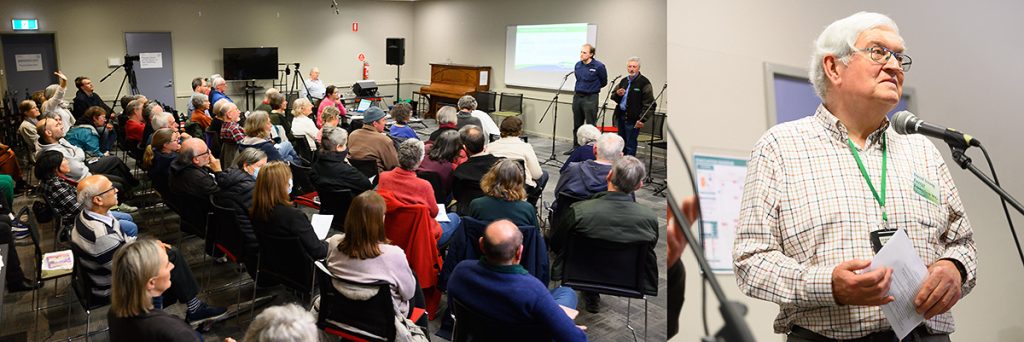
A big thank you to the Energy Transition Group and David Strang for organising this meeting on energy efficiency
Charlie Phillips on draught proofing
David Strang, Convenor of Lighter Footprints Energy Transition Group introduces Charlie Phillips, from Earthworker Smart Energy Cooperative.
Charlie introduces Earthwork Smart Energy Cooperative and starts the talk by referring to priorities to make your home more energy efficient: “you’ve got the low-hanging fruit, you’ve got the really low-hanging fruit” – draught-proofing is one of the really low-hanging fruit things to do, relatively low cost and able to make a major impact on comfort.
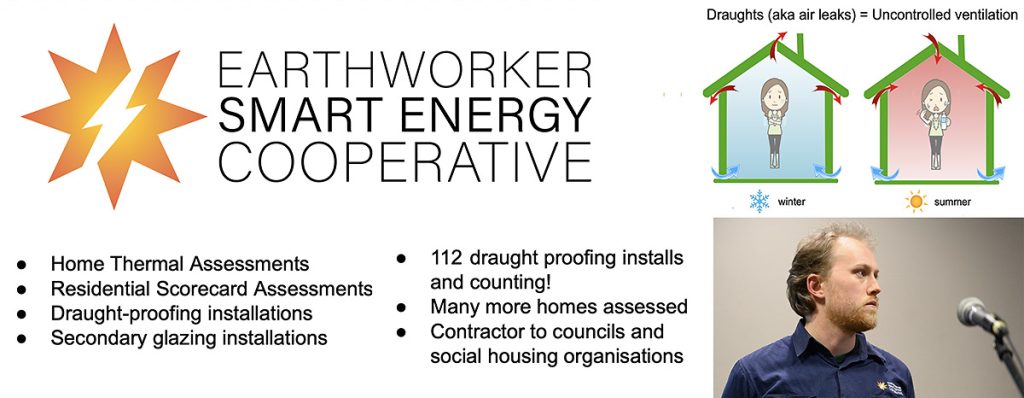
Charlie Phillips introduces Earthworker Smart Energy Cooperative – thermal assessments and draught proofing installations
“We do a lot of contracting, we do homes, we do a lot of work for Merri-bek Council”. Earthworker SEC have a lot of experience to be able to draught-proof your home.
Why fix draughts?
Why should we insulate? Well the first three reasons are comfort, comfort, and comfort!
You can watch the full video presentation for more detail at chapter point links like these:
We know that in winter, if you have a lot of leaks, the cold air is coming in and your heater is running hot air so you are feeling this cold air and warm air – which doesn’t feel comfortable in a ‘leaky house’. Conversely in summer, you have the cold air form the air conditioner circulating, but warm or hot air is entering, which doesn’t feel so comfortable. However, when you have draught-proofed your home, air temperature is much more stable from floor to ceiling, and this makes us feel more comfortable.
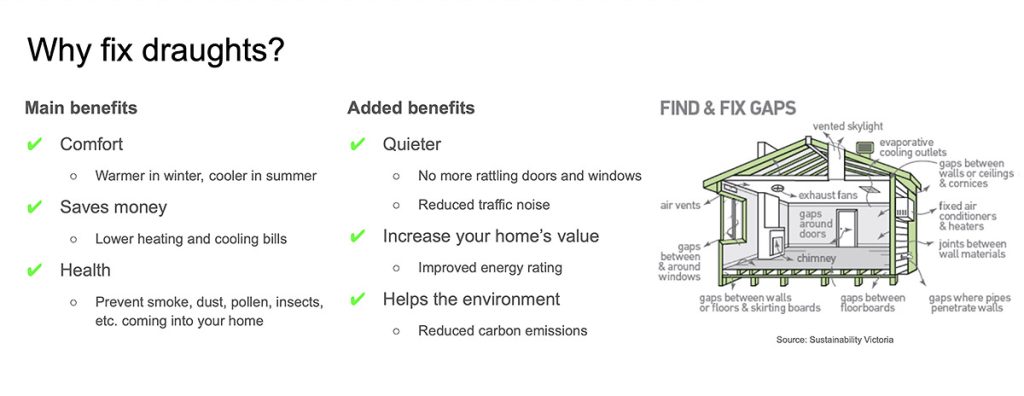
Comfort, health benefits and lower bills may be the main reasons to improve the thermal envelope of your home, but there are other environmental and ecomic benefits as well
As well as the massive improvement in comfort, we get other benefits – saves money, less dust and mites, quieter (reduces outside noise) ………..and reduces your carbon footprint.
How to prevent draughts

It’s important to use good products when sealing gaps and adding seals and trims – cheap product is likely to crack and crumble and may make the situation worse
- Seal cracks, gaps and wall vents
- Install seals on bottom of doors
- Install perimeter seals around doors and windows
- ‘Zone out’ rooms e.g. bathroom and laundry
Gas heaters inside your home – a word of warning
A quick warning! – if you have a gas space-heater inside, for your own safety, Charlie says ‘Unflued and open-flued gas heaters require a fresh air supply to prevent build-up on carbon monoxide’. (Unsure? ask a professional)

Unflued and open-flued gas heater need an air supply – also mould issues need to be addressed before draught proofing
Mould inside your home
If you have a mouldy home, stop everything…………. make sure that problem is solved before you draught-proof your home. Seek professional advice if you need to (could be a leak from above, or problems with external cladding, or rising damp, or condensation from inside)
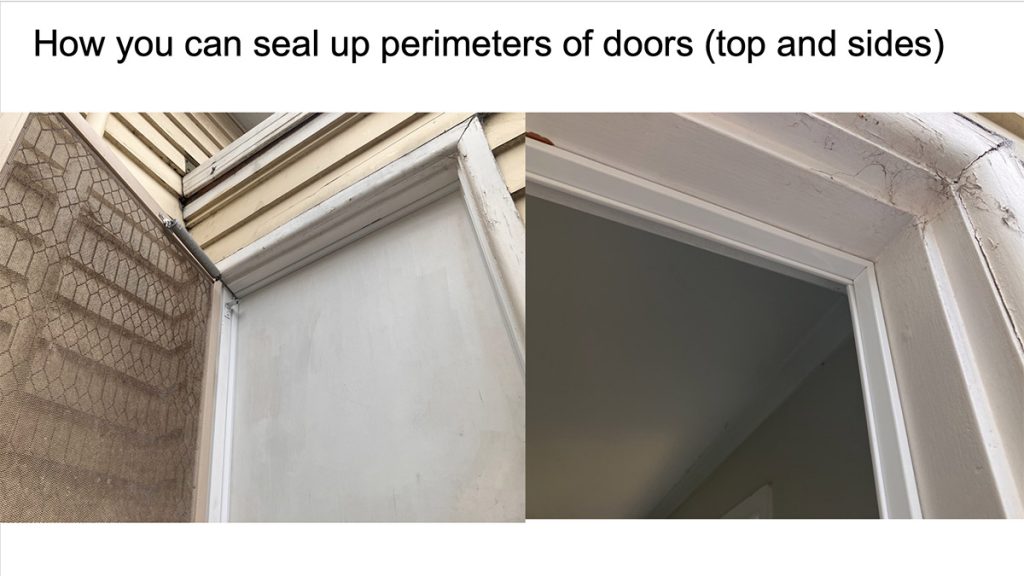
Well installed perimeter seals around doors are barely visible and do not interfere with the door closing
Sealing gaps and windows
There are a lot of products and fittings available to seal draughty doors and windows. Use good quality seals – avoid the stick-on products from major retailers – cheap stick-on seals crush, fall-off, get trapped and stop doors and windows closing.

All sorts of windows can benefit from draught proofing seals – some types are relatively difficult and are best installed by a qualified tradie or skilled DIYer
Avoiding bad installs
It’s important to avoid shoddy workmanship, or fix it! Any home can have big gaps, common on doors, sash windows, french-doors, etc. But it is not only old homes – often new homes or major extensions have big gaps on doors from poor installs.
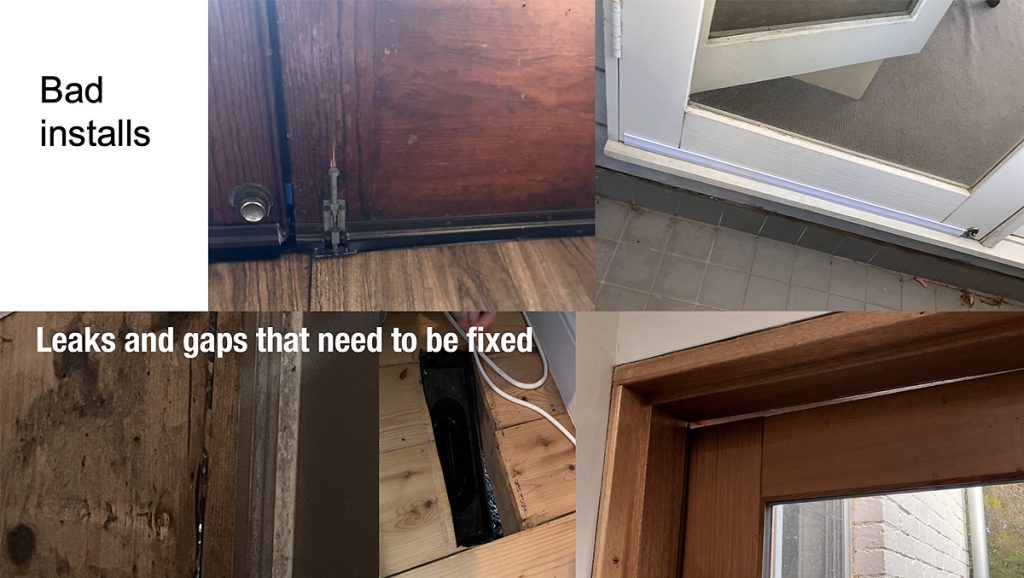
Here are examples of shoddy workmanship including sealing that is applied around door fasteners or is too short to massive gaps
Door knockers offering free, government-funded draught-stopping solution and installations are poorly trained or under sever time-pressure to ‘get in and get out’. Get a card and check there credentials before you allow them to start, ask them questions about what they propose to do, and what products they intend using. A cheap job could be a waste of time – yours and theirs.
To summarise
Draught-proofing is the low hanging fruit!
It’s generally one of the most effective things you can do. Its cost-effective, permanent (it’s not going to need maintenance), it’s passive (not prone to wear out and break down).
There are many co-benefits: comfort, health, noise, dust and smoke reduction.

Local examples of draught proofing installs in period and renovated homes
Maurice Beinat on ceiling, floor and wall insulations
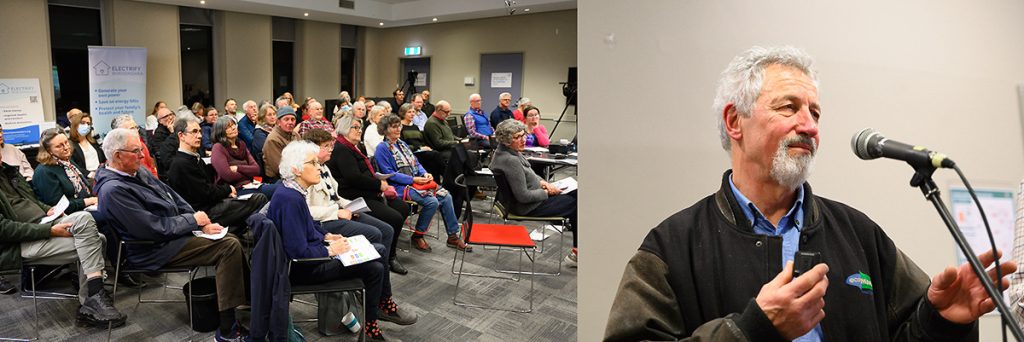
Maurice Beinat talks to a very engaged audience who asked detailed questions about insulation – home comfort and lower bills are great motivators
Introducing EcoMaster
Maurice Beinat introduced EcoMaster, explaining that working out how to fix their freezing home was a big initial motivator.
Maurice talked about EcoMaster’s twenty year history including 17 years in ‘done for you’ retrofits, and 3 years in DIY with products in Ecomaster store.

Maurice Beinat talked about why they started ecoMaster – despite huge power bills their house was always cold
Ecomaster have researched and developed their own products where necessary – draught dodgers, chimney draught-stops, good-bye heating vents (de-commissioned ducted heating vents), invisible pelmets, eco-glaze (secondary glazing).
Introducing Thermal Efficiency
What is thermal efficiency and why is it important?
The best energy is the energy you don’t use in the first place – that’s thermal efficiency. So while it is good to have an efficient air-conditioner, its even better to have a thermally efficient home that needs much less or very little heating or cooling.

Unlike energy efficiency, thermal efficiency concentrates on improving a building’s thermal envelope
Thermal efficiency focuses on walls, ceiling, floors, windows, doors. Buidling envelope efficiency means stopping leakage (draught-proofing), and thermal resistance ( insulation or materials that limit the movement of heat via home structure in winter, and heat into the home in summer).
Ceiling Insulation
The most important you can do is insulation – next thing after draught-proofing. You can’t possibly be warm in winter without ceiling insulation. Up to 45% of your heat can leave via your ceiling.

Ceiling insulation is the most important – you can see gaps in the insulation due to faulty installation in the thermal camera imaging
Insulation-type checklist:
- People friendly – non-toxic, non-itchy
- Planet friendly – recycled material, recyclable
- Rodent resistant
- Not damaged by water
- Easy to install
Polyester batts and rolls are amazingly people friendly! Ecomaster product is 85% old milk bottles so also friendly in terms of using recycled material.
An R Value is a scoring system that describes the insulation value of a particular type and depth of insulation when installed properly.
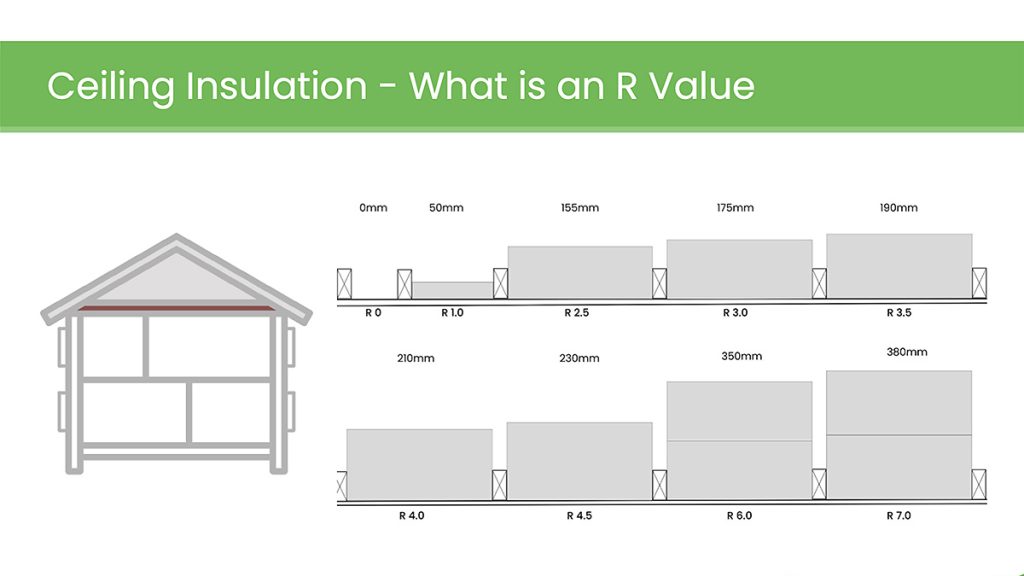
Maurice described the three main types of ceiling insulation and their advantages and disadvantages, including blow in ceiling insulation, ceiling batts, particularly polyester ceiling insulation and fibreglass batts. Reflective sheeting is no longer sold in the form illustrated below.
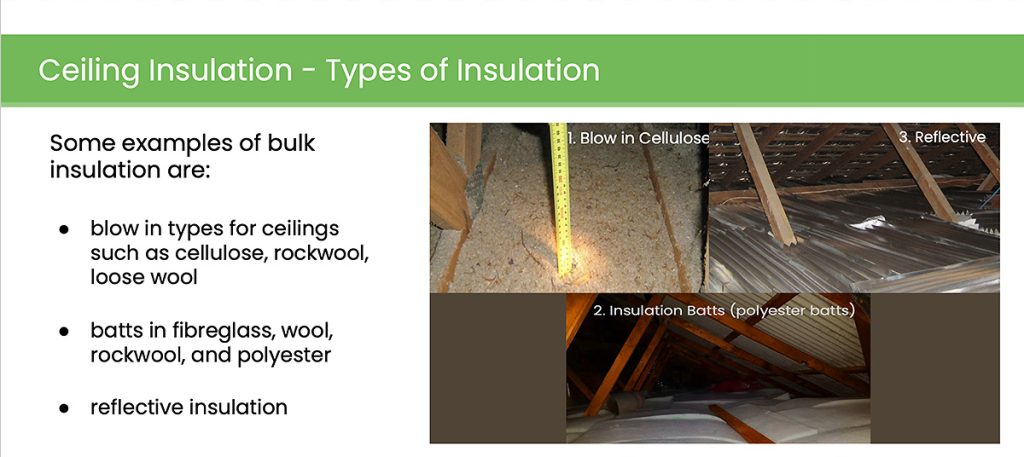
Blow in insulation is less expensive but can settle – typically Melbourne ceilings are insulated with batts. Reflective insulation is no longer installed in this sheet form
But before you start, get up in the ceiling and verify the following first (Note: you might want to isolate your electricity if in doubt about the electrics): What insulation is already in your ceiling? Check your lighting – if you have downlights, it is recommended you convert them to IC4 downlights (you can then put insulation over them), establish what work needs to be done, determine what level of R0-value (not much insulation) you have and what level of R-value you want, DIY or pay to get it done ? (up to you).
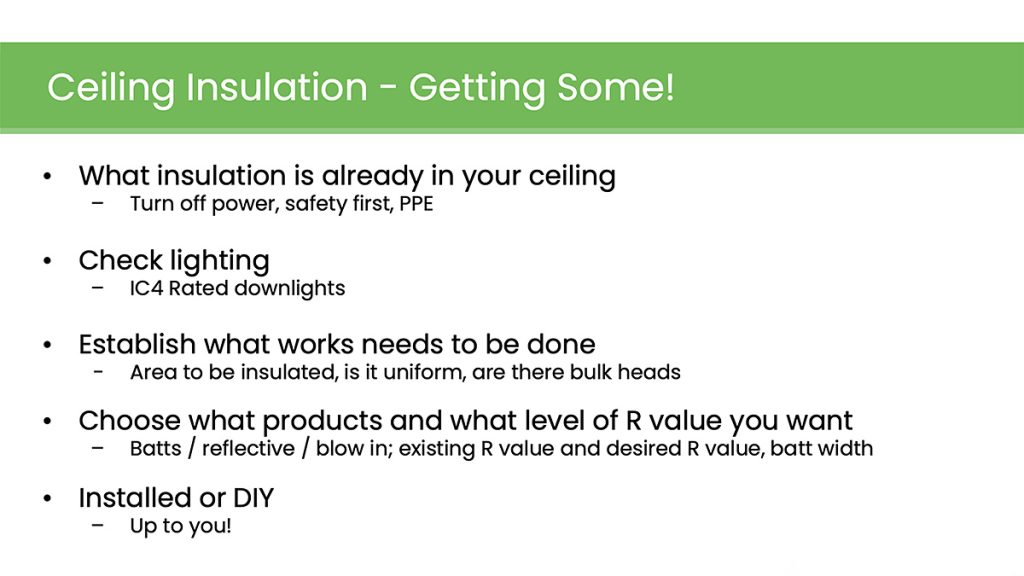
It’s important to check out what is there in your ceiling!
Maurice discussed a variety of examples of insulation problems and what to do with them.
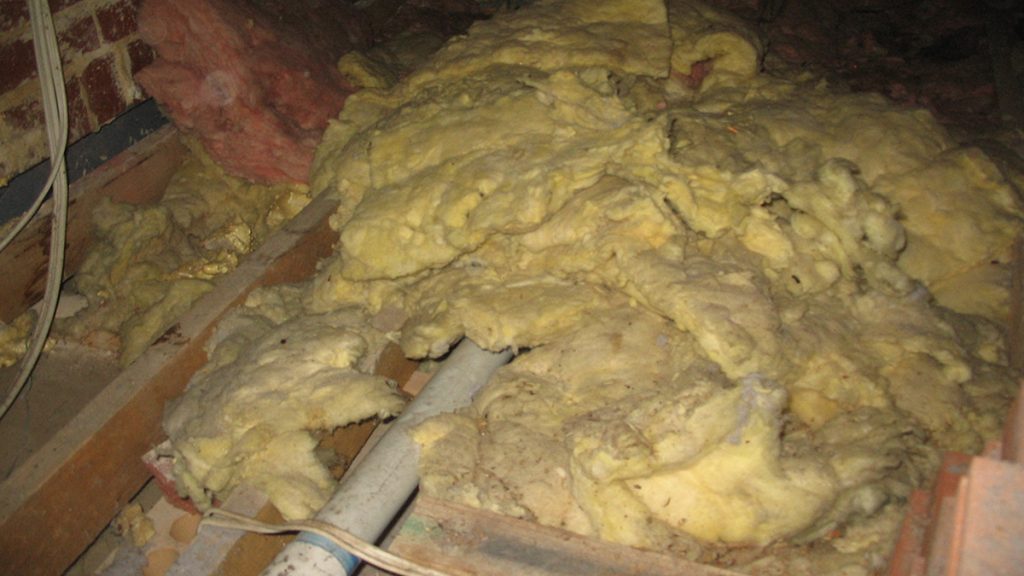
Investigating what is in your ceiling might reveal some suprises – clearly this pile will need to be removed and replaced
5% gaps in ceiling insulation coverage equate to 50% performance reduction in insulation.
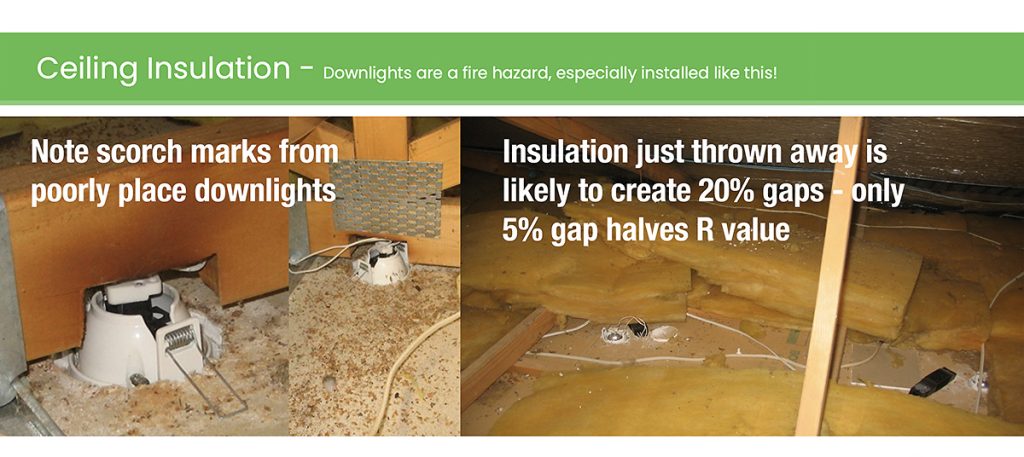
Poorly installed downlights can cause significant issues especially hurried installations where the installer has just thrown the insulation to the side.
If DIY, measure between joists, to determine width of batts – typically either 430mm or 580mm.
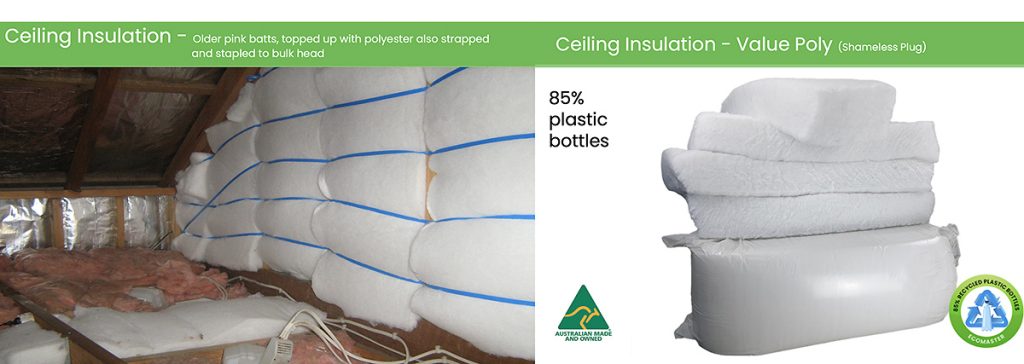
You can see the use of Value Poly in this strapped bulkhead insulation and also for topping up the existing ceiling batts
Ceiling is easiest job to DIY out of the three areas – ceiling, under floor, in-wall.
Underfloor and wall insulation
The rule is “If its beautiful its right!” Underfloor insulation stops a floor being at the outside ambient temperature – very helpful in winter, especially with timber floors.
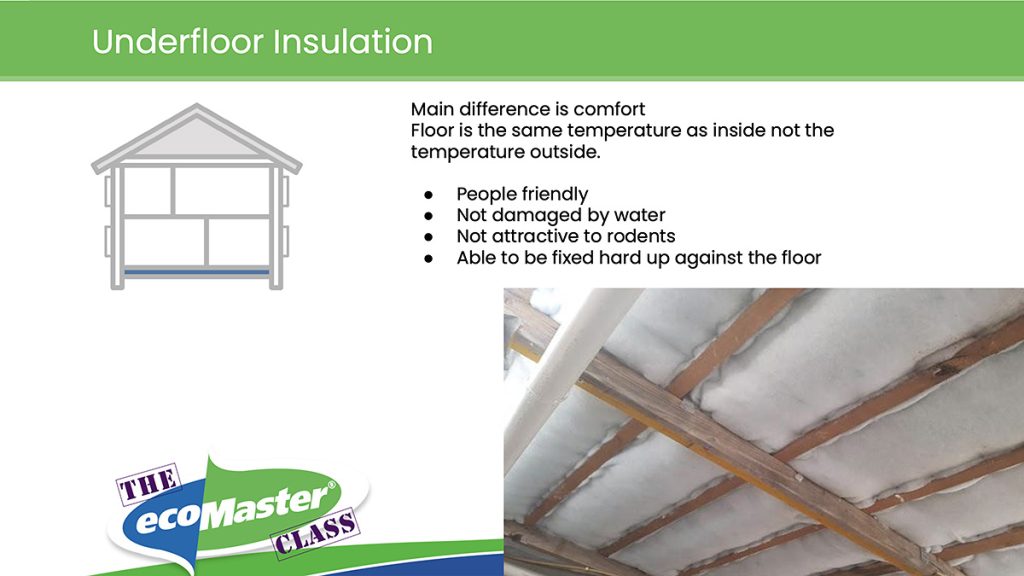
Underfloor insulation has many benefits – epecially for timber floors which become the same temperature as the inside of the house
Maurice showed a variety of examples of poor underfloor insulation installation.
Don’t use rigid board under floors, don’t use fibre-glass under floors.

Chicken wire failed to hold in the fibregass insulation and it is very difficult to use rigid insulation under floors
You need to do it right – doing it wrong is a waste of time and effort and money. Can be OK to do DIY if you can fit and are keen enough.

When installing underfloor installation it is important that the insulation is tight up against the floor with no gaps
The third type of installation is wall insulation – if it is possible it is worth getting some insulation in your walls. However this is usually a job for professionals.
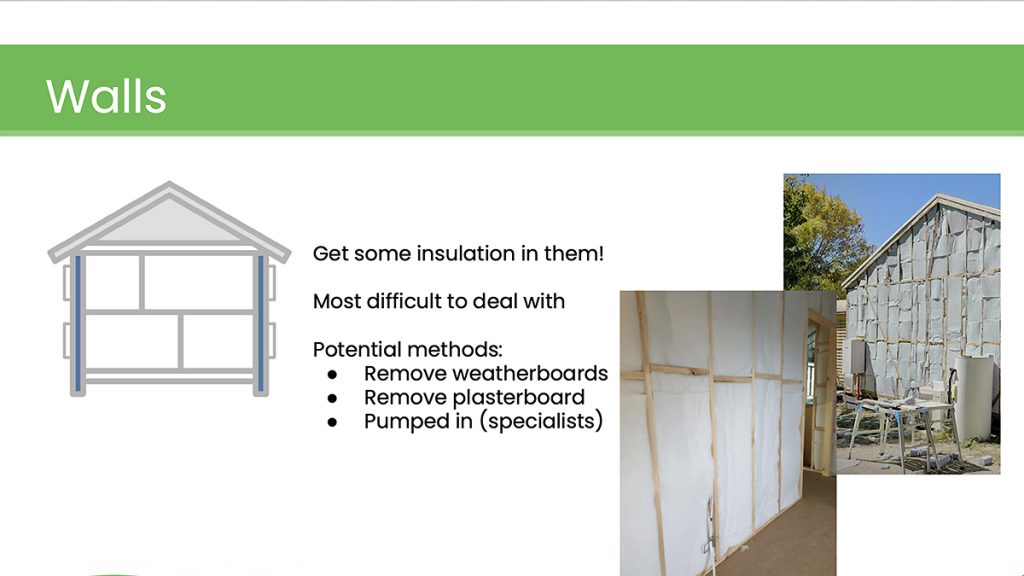
Insulating walls can be done through cutting holes and pumping in fill or sliding in wall batts with the aid of two pieces of rigid polycarbonate
Potential methods: remove weatherboards outside; remove plasterboard inside; pumped in insulation by specialists.
Audience Questions
Question One: Wall insulation and noggins
A second or more rows of holes is often needed to deal with noggins when installing wall insulation
Question Two: Working in tight spaces underfloor
This depends on the installer – a key metric is if you can roll over.
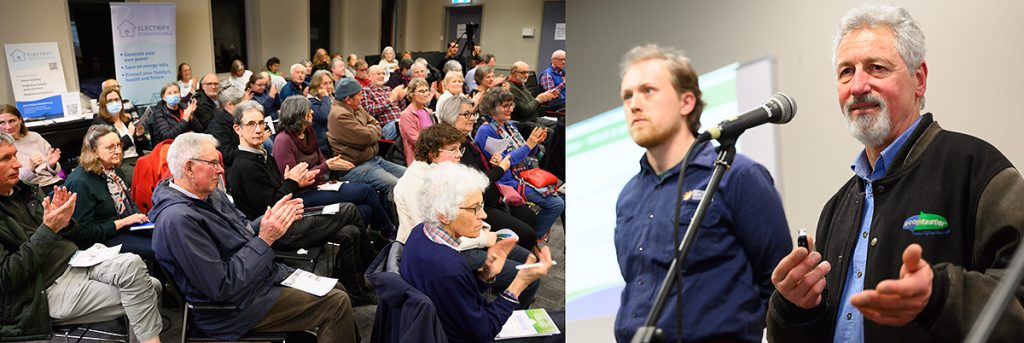
A big thanks to Charlie Phillips and Maurice Beinat for fast and to the point answers to audience questions
Question Three: Insulation and ceiling joists
Draping ceiling insulation over joists is a very bad idea as would be very little contact between the insulation and the ceiling and it is difficult to keep the air gap sealed.
Question Four: What to do about stapling into hardwood
Stapling into hundred year old hardwood is very difficult, easier in Victoria than in Queensland or NSW> The key is a good professional stapler. EcoMaster hires them for $85 per week.
Question Five: Thicker insulation and joists
Keeping joists clear is important so that you can see the joists, especially if using thicker insulation especially in higher traffic areas in ceiling.
Question Six: Insulating a flat roof
Firstly it is important to see how much space is there, secondly it is matter of lifting the roof, perhaps piece by piece with a roofing plumber. Scheduling is the real bug bear.
Question Seven: Composition of poly insulation
85% is recycled from PET bottles, 15% is low melt virgin fibre which is what holds it together.
Question Eight: Carbon monoxide and gas heaters
The main issue for draught proofing and gas heaters is needing fresh air with the free standing sort to avoid building up dangerous levels of carbon monoxide.
Question Nine: Ventilation and air changes
Passive house air changes is about 0.6 compared to Melbourne average of 15. Passive houses need active ventilation strategies but are remarkably comfortable.
Question Ten: Hydronic heating
No issue with draught proofing a home with hydronic heating.
Question Eleven Insulating a cavity brick wall
Double or cavity brick is good in the heat but terrible in the cold – worth insulating if possible.

